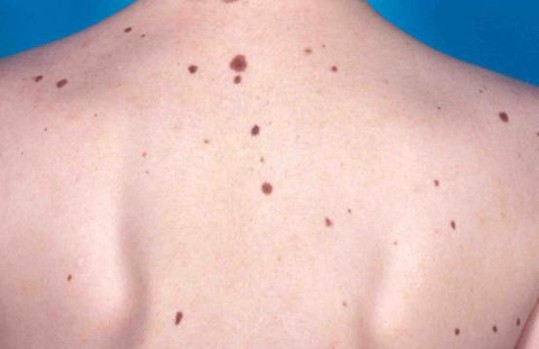Melanoma is a malignant tumor of melanocytes, which produce the pigment melanin and determine the color of the skin, hair and eyes. Recently, there has been an increase in the incidence of melanoma, which is mainly due to lifestyle changes and have led to increased exposure to the sun.
Most melanomas occur as sporadic cases with no prior family history. However, melanoma has been reported to be twice as common in people with an affected parent, three times more common if there is an affected brother and nine times more common if both a parent and a sib are affected. Increased incidence in a family is most likely due to both genetic and environmental factors.
A predisposition for melanoma is inherited in an autosomal dominant manner and the strongest genetic risk factor is associated with inherited mutations in the CDKN2A gene, encoding two similar proteins, p16/INK4 and P14/ARF. The CDKN2A gene is a tumor suppressor gene involved in the regulation of cell division and apoptosis.
The mean age at diagnosis of melanoma is significantly lower in CDKN2A mutation carriers (~36 years) than in patients who do not carry a gene mutation. Also, the existence of a family history of melanoma and pancreatic cancer may also indicate the presence of inherited CDKN2A gene mutations.
We perform DNA sequence analysis, via Next Generation Sequencing (NGS) on a Genome Analyzer – Ion Proton platform, of all exons and intron-exon junctions/splice sites of the CDKN2A gene, as well as deletion/duplication analysis through MLPA (non-detectable by DNA sequencing), allowing us to detect >98% of all pathogenic mutations of the gene.
